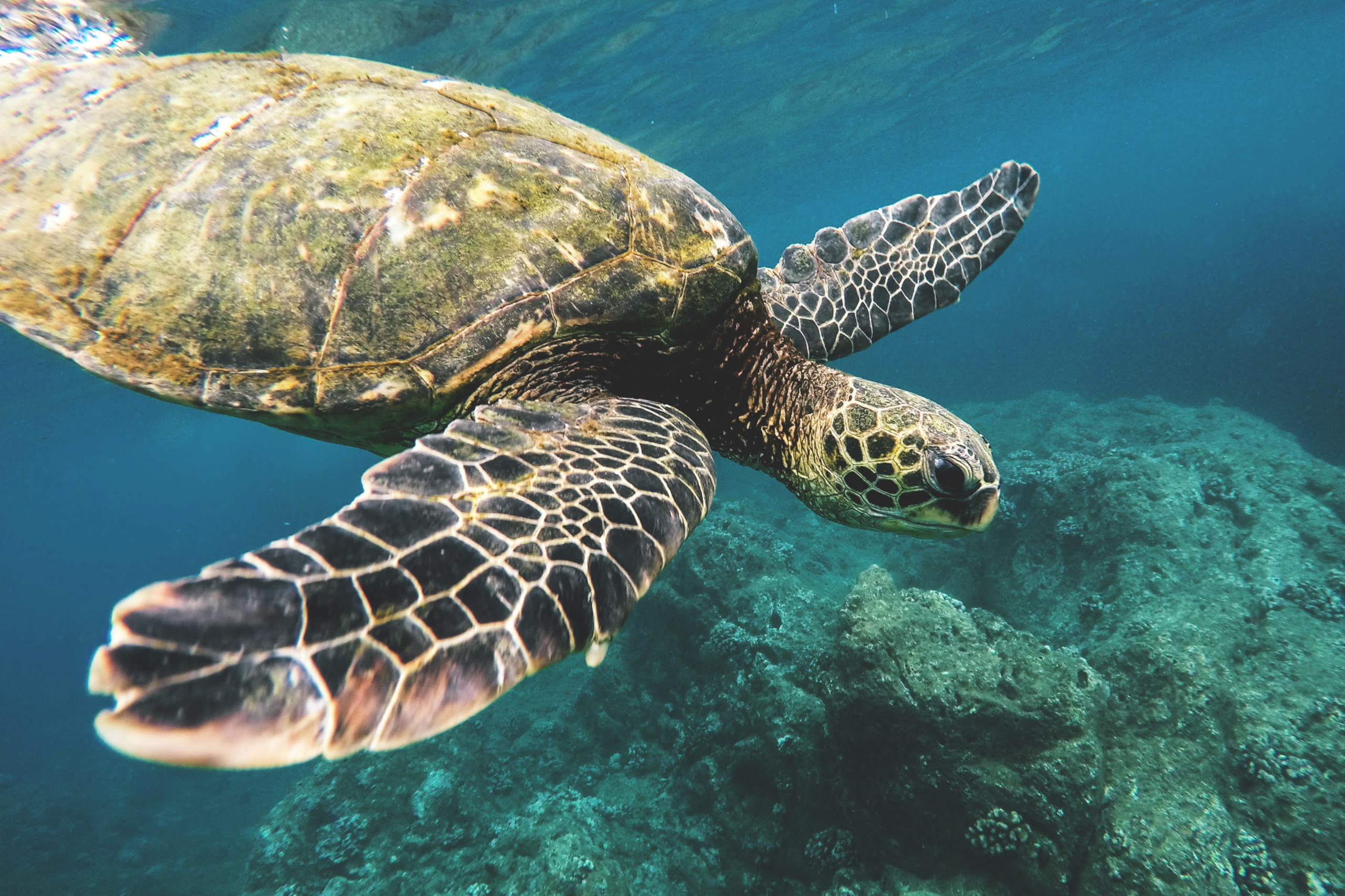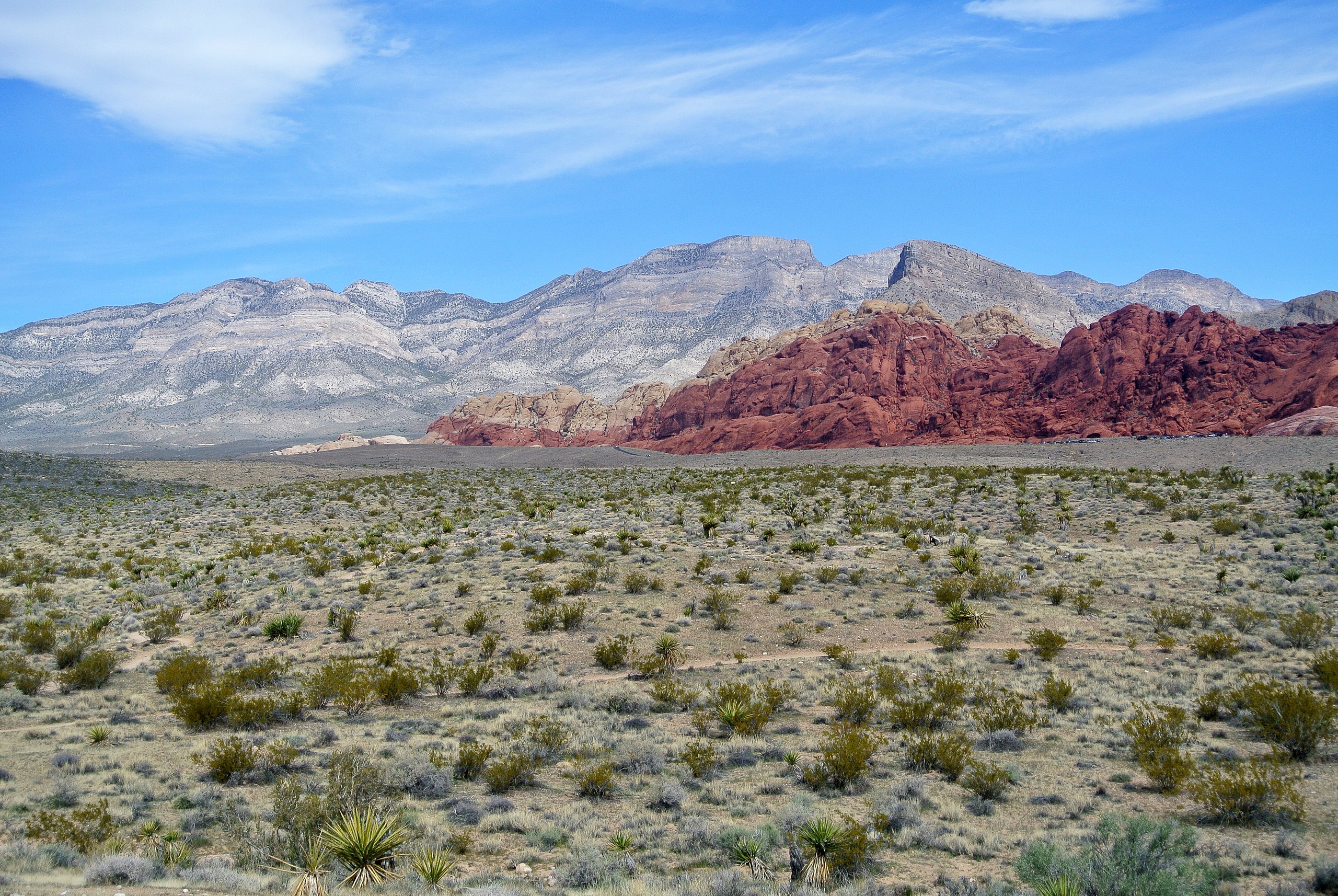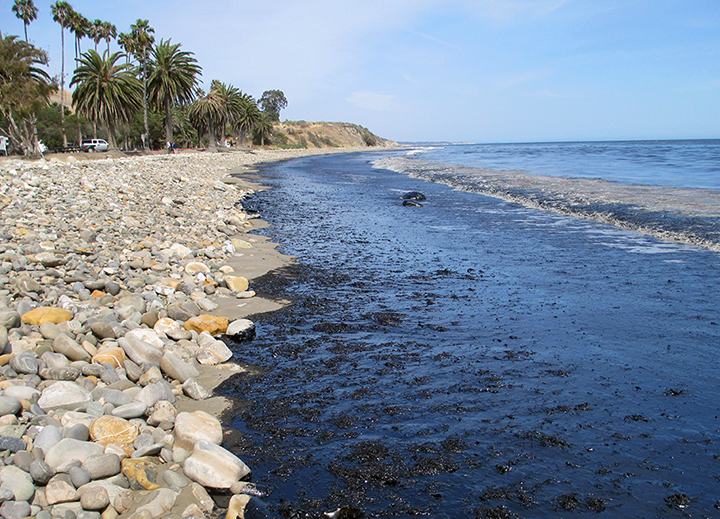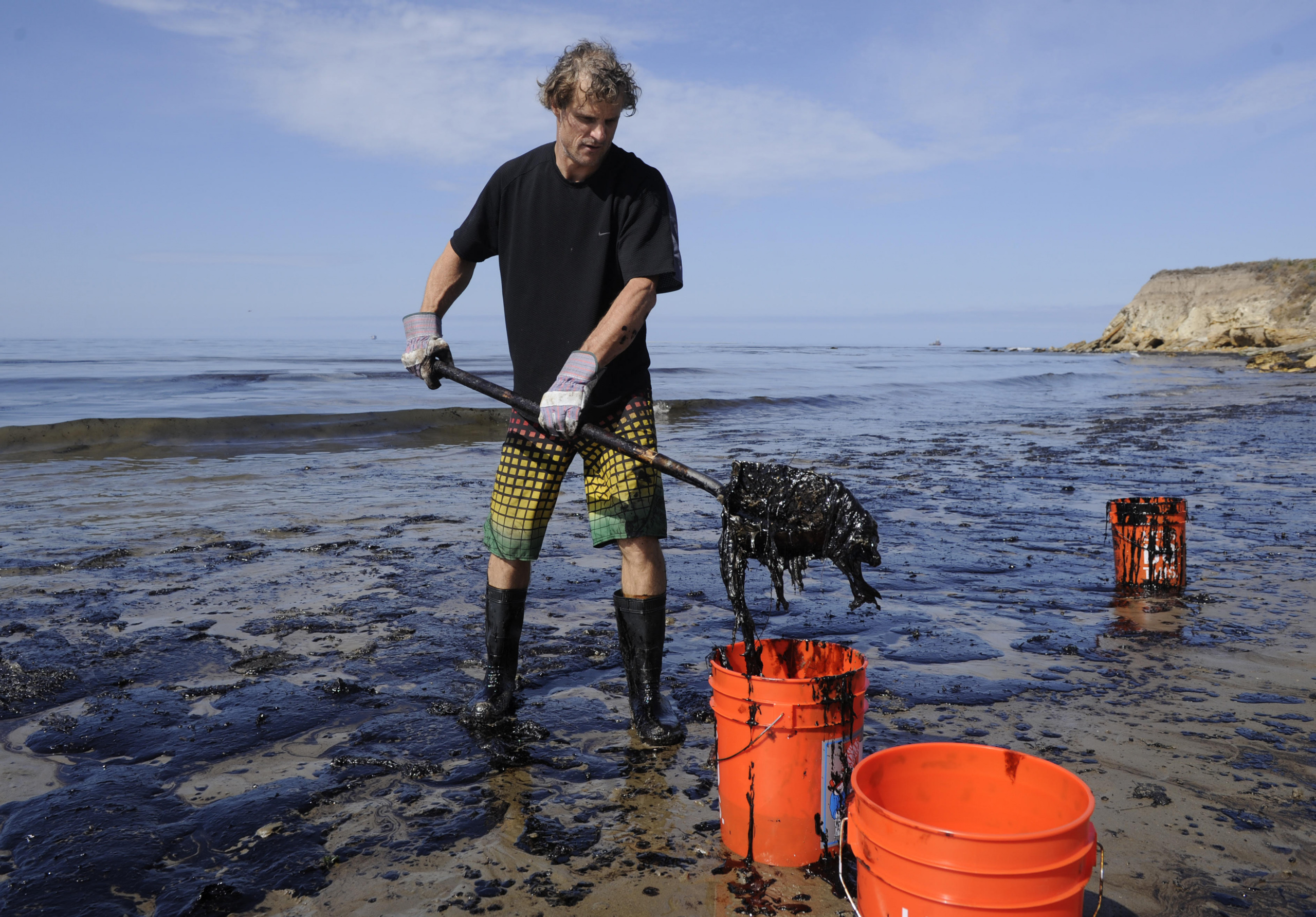
New Life for the Ocean
How Marine Protections Keep Our Waters Wild
Abuse and overexploitation of ocean environments have led to ecosystem destruction and biodiversity decline on an unprecedented scale. The experience of marine protected areas (MPAs) around the world shows that properly implemented marine protections can be effective in reversing the damage done to our ocean and restoring marine ecosystems to health.

Downloads
The ocean drives the processes that make our planet capable of supporting life, and contains some of the world’s most complex and diverse ecosystems.1 But these ecosystems are increasingly under threat. Pollution, overfishing, offshore drilling and other human activities are destroying ocean habitat and threatening marine species, with profound consequences for the biodiversity on which the health of our ocean depends.2
A growing number of scientists and conservationists are coalescing around the goal of protecting at least 30 percent of the world’s ocean by 2030 through networks of marine protected areas (MPAs) – protected zones of ocean where extractive and destructive human activity is limited.
The experience of six MPAs in the United States and around the world shows that marine protected areas are effective tools to conserve and revive marine ecosystems. To restore our ocean to health, governments should take a strategic, science-based approach to planning and implementing MPAs and regional MPA networks.
- Highly to fully protected MPAs can protect and increase biodiversity, which in turn boosts overall ecosystem health.3 A 2006 meta-analysis showed that species richness in fully protected MPAs increased by an average of 23 percent after their designation, and fish numbers in surrounding areas also significantly increased as a result of spillover from the protected zones.4
- MPAs create increased biomass, abundance and diversity of marine species. A 2009 analysis synthesizing a range of studies of no-take marine reserves (fully protected MPAs) showed that full protection resulted in significant increases in average biomass (i.e., the total mass of living organisms in a specific area), size and density of organisms, and the number of species present.5 In half of the reserves, total biomass of studied species was more than triple that of unprotected areas, and the density of those species more than 60 percent higher.6
- Highly to fully protected MPAs can help mitigate the impacts of climate change. Protected marine reserves have been found to increase the resilience of marine species to climate-induced impacts, such as shifts in species distribution, decreased ecosystem productivity and oxygen depletion, and to maintain the health of coral reefs and other features that protect coastlines from extreme weather events.7 A 2017 study concluded that marine reserves are thus “a viable low-tech, cost-effective adaptation strategy that would yield multiple cobenefits from local to global scales.”8
Marine protected areas have helped restore some of the world’s most precious and unique ocean ecosystems – including several in the United States.
- California’s MPA network. In America’s first science-based, statewide MPA network, once-depleted populations of cabezon, lingcod, black rockfish, black abalone and other species have experienced dramatic increases.9 Within a decade of the implementation of a network of fully protected zones within the Channel Islands National Marine Sanctuary, the density of species targeted by fishing had risen in these zones by 50 percent, and biomass by 80 percent.10
- Dry Tortugas National Park and Ecological Reserve, FL. Protection of an “ecological crossroads” in the Gulf of Mexico has played a key role in the recovery of reef species including red grouper, mutton snapper, yellowtail snapper and hogfish.11
- Papahānaumokuākea Marine National Monument, HI. America’s largest Marine National Monument, located in the Pacific Ocean off Hawaii, has helped rescue the endangered green turtle and Laysan duck from the brink of extinction and nurtured thriving populations of sharks, giant trevally and other species that have experienced massive population die-offs elsewhere.12
- Cabo Pulmo, Mexico. In one of the world’s greatest marine protection success stories, protections enabled a reef to recover from near-total destruction by aggressive over-fishing. In the space of just 10 years, overall marine biomass in the protected area increased by 463 percent, and the biomass of top predators, including sharks and grouper, increased by more than 1,000 percent.13
- Great Barrier Reef no-take marine reserves, Australia. In the world’s most famous reef, longstanding protections show the long-term benefits of MPAs for protecting biodiversity and enhancing ecosystem resilience. Protections have made reefs in no-take areas better able to rebound from coral bleaching, storms and coral disease than those in nearby areas with weaker protections and led to greater diversity, density and abundance of fish species, including coral trout, red emperor, redthroat emperor, stripey seaperch and sharks.14
- Edmonds Underwater Park, WA. In an artificial habitat in Puget Sound, protections have succeeded in restoring depleted local fish populations. Research has found the abundance of copper rockfish to be 15 times higher in Edmonds than in unprotected areas of the Puget Sound, and lingcod more than twice as abundant and significantly larger than in fished areas of the Sound.15
Marine reserves have also provided important research baselines to understand how marine ecosystems and individual organisms are being affected by local and global stressors, as well as important areas of reference for education and research on intact marine ecosystems.
Policy recommendations
The health of our ocean is in crisis. Abuse and overexploitation of marine environments have led to ecosystem destruction and biodiversity decline on an unprecedented scale. And experts say the worst may be yet to come.
Federal and state governments must take urgent action to boost our ocean’s resilience against the myriad threats it currently faces, and to ensure the maintenance of ocean ecosystems and conservation of marine life. Meeting these objectives will require action on numerous fronts, including sustainable fisheries management and global action on climate change.
Marine protected areas, if effectively implemented and properly managed, are a critical tool for protecting and enhancing the health of our ocean. Governments should take the following actions to expand marine protected areas and maximize their benefits for ocean health.
- Governments should adopt the goal of protecting at least 30 percent of their countries’ total ocean area, including 30 percent of the ocean area in each major geographic region and ecosystem. Given the relative lack of highly and fully protected MPAs in United States waters outside of the remote Pacific region, U.S. policymakers’ focus should be on ensuring that highly to fully protected MPAs are put in place across all key regions to ensure that representative examples of the diverse habitats and ecosystems in U.S. waters are protected.
- State and federal governments should strengthen protections in near-shore areas, especially by implementing highly to fully protected MPAs in these areas, in order to ensure adequate protections across all ecosystems and habitats and not just in remote areas of ocean.
- MPAs should be ecologically linked in regional networks to protect the full range of ecosystems and habitats in our ocean and ensure connectivity between fragmented habitats.
- State and federal governments should take a comprehensive, strategic and science-based approach to planning, designing and designating MPAs and MPA networks, integrating regional scientific knowledge, engaging local communities and other stakeholders, educating the public, and evaluating potential economic impacts.
- State and federal authorities must ensure that implementation of MPAs and MPA networks is accompanied by a comprehensive management plan, with a focus on scientific monitoring and robust efforts to ensure that protections are properly funded and enforced.
- Policymakers should take measures to promote MPAs and disseminate research carried out on MPAs to enable the public to better understand their value and support efforts to protect and enhance these areas.
- United Nations Sustainable Development Goals, Goal 14: Conserve and Sustainably Use the Oceans, Seas and Marine Resources, accessed 30 June 2020, archived at https://web.archive.org/web/20200701060256/https://www.un.org/sustainabledevelopment/oceans/.↩︎
- MarineBio, Threatened & Endangered Species, accessed 30 June 2020, archived at https://web.archive.org/web/20200701061724/https://marinebio.org/conservation/marine-conservation-biology/threatened-endangered-species/.↩︎
- Kristina M. Gjerde, United Nations Environment Programme, Ecosystems and Biodiversity in Deep Waters and High Seas, 2006, 44, accessed 30 June 2020, archived at https://web.archive.org/web/20200701062050/https://wedocs.unep.org/bitstream/handle/20.500.11822/13602/rsrs178.pdf?sequence=1&isAllowed=y.↩︎
- Boris Worm et al., “Impacts of Biodiversity Loss on Ocean Ecosystem Services,” Science, 314, 787-790, doi: 10.1126/science.1132294, November 2006, 789, archived at https://web.archive.org/web/20200707013658/https://www3.epa.gov/region1/npdes/schillerstation/pdfs/AR-024.pdf.↩︎
- Sarah E. Lester et al., “Biological Effects Within No-take Marine Reserves: A Global Synthesis,” Marine Ecology Progress Series, 384: 33-46, doi: 10.3354/meps08029, 2009, 44.↩︎
- Ibid.↩︎
- Enric Sala et al., “No-take Marine Reserves are the Most Effective Protected Areas in the Ocean,” ICES Journal of Marine Science, 75(3): 1166–1168, doi: https://doi.org/10.1093/icesjms/fsx059, May-June 2018. Callum Roberts et al., “Marine Reserves Can Mitigate and Promote Adaptation to Climate Change,” Proceedings of the National Academy of Sciences, 114(24): 6167-6175, doi: 10.1073/pnas.1701262114, June 2017.↩︎
- Callum Roberts et al., “Marine Reserves Can Mitigate and Promote Adaptation to Climate Change,” Proceedings of the National Academy of Sciences, 114(24): 6167-6175, doi: 10.1073/pnas.1701262114, June 2017.↩︎
- First science-based, statewide MPA network: Samantha Murray et al., “A Rising Tide: California’s Ongoing Commitment to Monitoring, Managing and Enforcing its Marine Protected Areas,” Ocean & Coastal Management, 182, doi: https://doi.org/10.1016/j.ocecoaman.2019.104920, December 2019. Species population increases: California Ocean Science Trust et al., State of the California Central Coast: Results from Baseline Monitoring of Marine Protected Areas 2007–2012, 2013, 3.↩︎
- Scott L. Hamilton et al., “Incorporating Biogeography into Evaluations of the Channel Islands Marine Reserve Network,” Proceedings of the National Academy of Sciences USA, 107(43): 18272-18277, doi: 10.1073/pnas.0908091107, October 2010.↩︎
- National Park Service and Florida Fish and Wildlife Conservation Commission, Assessing the Conservation Efficacy of the Dry Tortugas National Park Research Natural Area, 2015, 3, archived at https://web.archive.org/web/20200701065749/https://www.nps.gov/ever/learn/nature/upload/DRTO-Science-Plan_GPO_print_Feb2016-508.pdf.↩︎
- Turtles: Antonios D. Mazaris et al., “Global sea turtle conservation successes,” Science Advances, 3(9), e1600730, doi: 10.1126/sciadv.1600730, 2017. Ducks: Ken Foote and Michelle Reynolds. “Endangered Laysan Ducks Thrive at Midway.” Endangered Species Bulletin, 23(2), 2006, accessed 6 July 2020. Predators: Papahānaumokuākea Marine National Monument, Papahānaumokuākea as a Top Predator Dominated Ecosystem, accessed 30 June 2020, archived at https://web.archive.org/web/20200701070047/https://www.papahanaumokuakea.gov/wheritage/predator.html.↩︎
- Smithsonian, Cabo Pulmo Protected Area, April 2018, accessed 10 June 2020, archived at https://web.archive.org/web/20200710080500/https://ocean.si.edu/conservation/solutions-success-stories/cabo-pulmo-protected-area. Octavio Aburto-Oropeza et al. “Large Recovery of Fish Biomass in a No-Take Marine Reserve,” PLOS ONE 6(8), DOI: https://doi.org/10.1371/journal.pone.0023601, August 2011.↩︎
- Coral bleaching, storms and coral disease: Joleah Lamb et al., “Protected Areas Mitigate Diseases of Reef-Building Corals by Reducing Damage from Fishing,” Ecology, 96(9): 2555-2567, doi: 10.1890/14-1952.1, September 2015, 2560, archived at https://web.archive.org/web/20200630000024/https://static1.squarespace.com/static/53c8c0c7e4b0b8f450cea5bb/t/5789f501414fb5187fb00b36/1468658955689/Lamb+et+al.+2015_Ecology.pdf. Comparison with unprotected areas: Camille Mellin et al., “Marine Protected Areas Increase Resilience Among Coral Reef Communities,” Ecology Letters, 19(6): 629-637, doi: https://doi.org/10.1111/ele.12598, June 2016. Australian Institute of Marine Science, Great Barrier Reef No-take Marine Reserves Protect Much More than Just the Fish, (media release), 4 April 2016, archived at https://web.archive.org/web/20200706223741/https://www.aims.gov.au/docs/media/latest-releases/-/asset_publisher/8Kfw/content/04-april-great-barrier-reef-no-take-marine-reserves-protect-much-more-than-just-the-fish. Diversity, density: Joleah Lamb et al., “Protected Areas Mitigate Diseases of Reef-Building Corals by Reducing Damage from Fishing,” Ecology, 96(9): 2555-2567, doi: 10.1890/14-1952.1, September 2015, 2560-1. Abundance: Garry Russ et al. “Rapid Increase in Fish Numbers Follows Creation of World’s Largest Marine Reserve Network,” Current Biology, 18(12), R514-R515, doi: https://doi.org/10.1016/j.cub.2008.04.016, 24 June 2008. Coral trout, striped seaperch: D.H. Williamson et al., “No-Take Marine Reserves Increase Abundance and Biomass of Reef Fish on Inshore Fringing Reefs of the Great Barrier Reef,” Environmental Conservation, 31(2): 149-159, doi: https://doi.org/10.1017/S0376892904001262, 2004; red emperor and redthroat emperor: Laurence McCook et al., “Adaptive Management of the Great Barrier Reef: A Globally Significant Demonstration of the Benefits of Networks of Marine Reserves,” Proceedings of the National Academy of Sciences, 107(43): 18278-18285, doi: https://doi.org/10.1073/pnas.0909335107, October 26, 2010; sharks: M.R. Heupel et al., “Effects of Fishing on Tropical Reef Associated Shark Populations on the Great Barrier Reef,” Fisheries Research, 95(2-3): 350-361, doi: https://doi.org/10.1016/j.fishres.2008.10.005, 2009, quoted in Laurence McCook et al., “Adaptive Management of the Great Barrier Reef: A Globally Significant Demonstration of the Benefits of Networks of Marine Reserves,” Proceedings of the National Academy of Sciences, 107(43): 18278-18285, doi: https://doi.org/10.1073/pnas.0909335107, October 26, 2010.↩︎
- Copper Rockfish: Wayne A. Palsson, “The Development of Criteria for Establishing and Monitoring No-take Refuges for Rockfishes and Other Rocky Habitat Fishes in Puget Sound,” Puget Sound Research, 2001, 6, available at https://pdfs.semanticscholar.org/b388/09adc238f2fdf3d4712ade12de47075040c2.pdf?_ga=2.206436115.1436537532.1594420808-1970200413.1588695890, cited in Alaska Department of Fish and Game Marine Protected Areas Task Force, Marine Protected Areas in Alaska: Recommendations for a Public Process, July 2002, archived at https://web.archive.org/web/20200706225741/https://www.adfg.alaska.gov/static/lands/protectedareas/pdfs/5j02-08.pdf. Lingcod: Wayne Palsson, “Marine Refuges Offer Haven for Puget Sound Fish,” Fish and Wildlife Science, cited in Alaska Department of Fish and Game Marine Protected Areas Task Force, Marine Protected Areas in Alaska: Recommendations for a Public Process, July 2002, archived at https://web.archive.org/web/20200706225741/https://www.adfg.alaska.gov/static/lands/protectedareas/pdfs/5j02-08.pdf.↩︎
Topics
Authors
James Horrox
Policy Analyst, Frontier Group
James Horrox is a policy analyst at Frontier Group, based in Los Angeles. He holds a BA and PhD in politics and has taught at Manchester University, the University of Salford and the Open University in his native UK. He has worked as a freelance academic editor for more than a decade, and before joining Frontier Group in 2019 he spent two years as a prospect researcher in the Public Interest Network's LA office. His writing has been published in various media outlets, books, journals and reference works.
Steve Blackledge
Senior Director, Conservation America Campaign, Environment America Research & Policy Center
Started on staff: 1991 B.A., Wartburg College Steve directs Environment America’s efforts to protect our public lands and waters and the species that depend on them. He led our successful campaign to win full and permanent funding for our nation’s best conservation and recreation program, the Land and Water Conservation Fund. He previously oversaw U.S. PIRG’s public health campaigns. Steve lives in Sacramento, California, with his family, where he enjoys biking and exploring Northern California.
Find Out More

New Factsheet: Banning Single-Use Plastics

Protecting the Places We Love

Offshore Drilling, Onshore Damage


